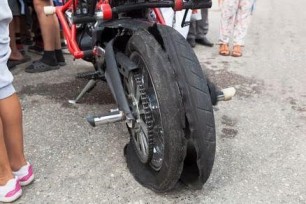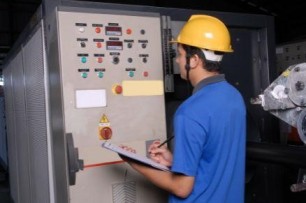General Insurance Blogs, Articles & Updates by - Magma HDI
Have us call you
- RENEW YOUR POLICY
- BUY NEW POLICY

Are you downsizing to a smaller space? Here are five tips to know
Moving to a new house can be an exciting change. And downsizing to a smaller place is beneficial for many reasons, including saving money and getting rid of unused space. However, it can be a challenge to decide which things to take with you and which to give away. If you get emotionally attached to your possessions, this kind of a move may be difficult for you. It's good to have a few tips up your sleeve for an efficient and clutter-free move.
Here are a few things to keep in mind while downsizing your house.
1. Give away or throw away:
One of the effective ways to make room in your new smaller house is by giving or throwing away the items that are no longer in use. For example, if you still have your primary school books or old clothes, you could donate them to the needy. For things that you cannot give away, you can recycle or simply throw them away.
2. Avoid renting storage units:
Storage units can be a great place for storing items when you do not have enough space in your house. They allow you to keep things you no longer use or need. However, before renting one, ask yourself whether you really need it and if you are willing to pay its rent for the next ten years. Remember one rule: if you have not used the item in the last year, you do not require it anymore.
3. Measure out your new space:
It is advisable to measure the dimensions of each room and other vital spaces of your new home. Make sure to get accurate measurements to eliminate any unnecessary furniture that won't fit. Try to manage and utilize the available space smartly to avoid any issues in adjusting to the new environment.
4. Make money for your move:
If you have numerous items that you do not need but can still be used by other people, you can set up a neighbourhood garage sale or resell them online. Create advertisements to generate awareness about your shop.
5. Avoid additional costs:
When you downsize to a smaller house, it can be tempting to buy new furniture that would go with your new place. However, this can cost a hefty amount of money. Think of how you can make the best use of your current furniture, and if you must purchase new things, aim to buy used ones whenever possible.
Setting up a few rules and focusing on what you need and do not need can make your move easier. While you're at it, it might be wise to re-evaluate your home insurance policy. Investing in the best home insurance policy in India will provide you with protection and safety in your new place. If you already have an insurance plan, don't forget to inform the firm about the change in your address to ensure you continue to receive the benefits.
Click HERE to protect your new home with a layer of best home insurance policy in India.
Disclaimer: The information provided above is for illustrative purposes only. To get more details, please refer to policy wordings and prospectus before purchasing a policy.

Easy DIY steps to clean your two wheeler's trunk
You are aware of the importance of cleaning and maintaining your two-wheeler, which can help you extend the life of your vehicle. But do you know that the trunk is often the most neglected space of your two-wheeler?
Your helmet, papers, groceries, umbrella, water bottles, etc., are primarily stored in the trunk of your two-wheeler. This makes it most susceptible to dust and dirt. In this article, we will take a look at a few easy ways to keep your trunk clean.
1. Organize:
The first step to maintaining a clean trunk is to keep everything organised. Try keeping your papers, first aid, and helmet systematically instead of throwing them into the boot. Store the essential documents in clean zip-lock plastic to avoid tears. Keep the first aid in a small pouch for easy access in an emergency. Efficiently organising the materials within the trunk helps you keep the space clean and provides you with easy access whenever you want something.
2. Dry cloth:
We tend to keep the helmets or wet umbrellas directly inside the trunk without giving a thought. One way to ensure clean trunk space is always keeping a dry cloth handy. If it is necessary to keep your wet umbrellas in the boot, keep the umbrella in plastic before placing it into the boot. To ensure that there is no water left, take a dry microfiber cloth and pat dry the area inside the boot. Do not forget to dry the area just under the seat as well. Moisture can lead to corrosion, eventually eating up the entire chassis. To avoid this, always ensure that your vehicle is dry.
3. Use sprays and cleaning solutions:
Ever so often, use mild cleaning liquid to clean the space out. Use a damp cloth to wipe down the area. After this, use the soap to wipe down inside the boot. Use a dry cloth to wipe off any remaining liquids to avoid stains.
4. Accidental spills:
Sometimes, we forget our shopping bags and end up stuffing our trunks with groceries and other essentials. This can create a chance of an accidental spill. Always use a dry cloth and a plastic container to take out the waste. After clearing out the spill, use a wet cloth to wipe down the boot’s insides. Use a non-corrosive spray or a sanitizer to get rid of the greasiness. Use another dry cloth to get rid of the residue. If you notice any dirt inside the nooks and corners, use an old toothbrush or a makeup brush to reach the area and clean out the excess gunk.
These are a few ways in which you can ensure clean trunk space. In the future, if you wish to sell your bike, a well-maintained and clean vehicle is a testament to the excellent ownership displayed by you. Another way to add value to your vehicle is by investing in the best two wheeler insurance in India. Being a responsible owner, you must ensure the safety of your two-wheeler by having the best deals to get guaranteed financial protection against any accident.
Click HERE to know more about the best two wheeler insurance in India.
Disclaimer: The information provided above is for illustrative purposes only. To get more details, please refer to policy wordings and prospectus before purchasing a policy.

Know how to control your bike after a tyre burst
When you go out for a drive, hearing your tyre burst is the last thing you want. It can lead to a deadly accident. Many companies have now introduced tubeless tyres to reduce the chances of a blowout. However, there is very minimal time to control your bike if one does happen.
Since time is of the essence in such emergencies, it is important to know exactly what you need to do. So before going on your next ride, make sure you go through the following tips on controlling your bike after a tyre burst.
1. Do not hit the brakes instantly:
Whenever something goes wrong while driving or when we sense an emergency on the road, our natural instinct is to hit the brakes. However, this is not the universal solution to all emergencies. When you press the brakes suddenly, you may be thrown off your bike into the oncoming traffic.
If you are travelling at high speeds, more than 90 kmph, applying brakes suddenly can result in dangerous situations. Pressing brakes at high speeds can make the vehicle wobble, causing you to lose control of it. Instead, you should try rolling on the bike without using the brakes at all.
2. Maintain appropriate speed:
Speeding is one of the leading causes of accidents occurring on the road. When you go over the speed, say, more than 100 kmph, you are more likely to face a nasty collision in case of a tyre burst.
The chances of safely coming to a halt on time are much higher when travelling at slow/safe speeds. On the other hand, speeding will make your bike uncontrollable during a tyre burst and reduce or eliminate the chances of recovery afterwards.
3. Use engine braking:
If you have a bike with good engine braking, you can use that to slow down your vehicle instead of hitting the brakes. When your bike suffers a tyre burst, shift down the gears and accelerate using engine braking to slow down gradually. By this method, your bike will not suffer from the shock of sudden braking, and the chances of losing control of your bike will reduce significantly.
4. Keep your bike straight:
When experiencing a tyre burst, there isn't much time to avoid an accident or think about directions. However, to save yourself, you should try to keep your bike straight and steady. Turning the motorcycle or veering can worsen the situation.
Of course, if there is a danger zone in front of you, making a turn is the only choice. However, do this with acute linearity because a sudden directional change can unbalance the bike and result in a mishap.
Accidents are unpredictable and can happen when we least expect them. Keeping a check on your bike and conducting regular maintenance can prevent an unexpected tyre burst. In addition to it, secure yourself and bike in such uncertain times through individual accident insurance. Ride safe so that you enjoy riding your bike again!
Click HERE to buy the best individual accident insurance.
Disclaimer: The information provided above is for illustrative purposes only. To get more details, please refer to policy wordings and prospectus before purchasing a policy.

Five best tips to adhere for ensuring total safety of workers at manufacturing facilities and factories
Workers are the backbone of any manufacturing facility. Working relentlessly to get the best quality products is a result of their hard work. But sometimes, we tend to neglect the importance of these workers and take their safety for granted. Inspection of workspace safety throughout the day is one way to ensure a safe environment in the factory. This also shows that you care for your employees and their well-being. Safe working spaces have a direct effect on the productivity of the workforce.
In this article, we will discuss a few ways in which you can ensure the total safety of your workers.
1. Usage of machines and their maintenance:
Improper use of machines is one of the leading causes of workplace injury. Using tools and equipment for their intended purpose only is the first step to avoiding an accident. For the newer workforce, orientation sessions can be conducted to familiarise them with the latest tools and machinery. Regular cleaning and inspection should also be made part of their work to ensure added safety and extended lifetime of the machines.
2. Clear the aisles:
Aisles are the most used parts of a factory. Be it the moving of various things from one place to another or simply the employee movement within the facility. It is extremely important to frequently clean the space if the area is used for liquids and other greasy materials. Clean up any spillage immediately to ensure the best working conditions. Also, make sure that there are no small parts of the machinery lying around that might cause tripping and falling.
3. Keep emergency exits clear:
Blocked emergency exits have been the reason for some of the most dangerous and fatal hazards in manufacturing units and factories. To ensure safe access to the exit, avoid blocking emergency exits. A cluttered work area will also pose a danger if one wants to exit immediately. Placing different objects in their specified storage areas will help keep the work area clean and organised.
4. Eliminating fire hazards:
Working with combustible materials can pose real threats to your factory and the people working in it. If you work with combustion tools, keeping only the required amount at hand can ensure a lesser chance of any danger. When not using the chemicals, keep them stored in a cool dark place away from ignition points. Do not forget to store the waste in metal holders and dispose of it daily.
5. Take breaks:
Work-related injuries are caused due to strained muscles and over exhaustion by the workers. When tired and burnt out, one finds it difficult to focus and deliver top-quality work. Instead, taking regular breaks ensures alertness during work. Providing the workers with proper restrooms and clean drinking water facilities is another way to ensure that your workers are taken care of and that you care for their well-being. A rule of thumb is to allow a fifteen-minute and a thirty-minute break for working for four hours and six hours, respectively.
These are a few ways to ensure that your workers are safe at the facility. Investing time and efforts for the well-being of your workers will provide a dedicated workforce that delivers top-quality outcomes. To add more value to their lives and work, invest in public liability insurance to help them and your factory in an emergency and cover the medical and other expenses incurred during the process.
Public liability insurance is a safety net that provides financial protection if your business faces a compensation claim due to a worker’s injury or property damage. Do not forget to look for the best public liability insurance India options.
Click HERE to find out more about public liability insurance India.
Disclaimer: The information provided above is for illustrative purposes only. To get more details, please refer to policy wordings and prospectus before purchasing a policy.


